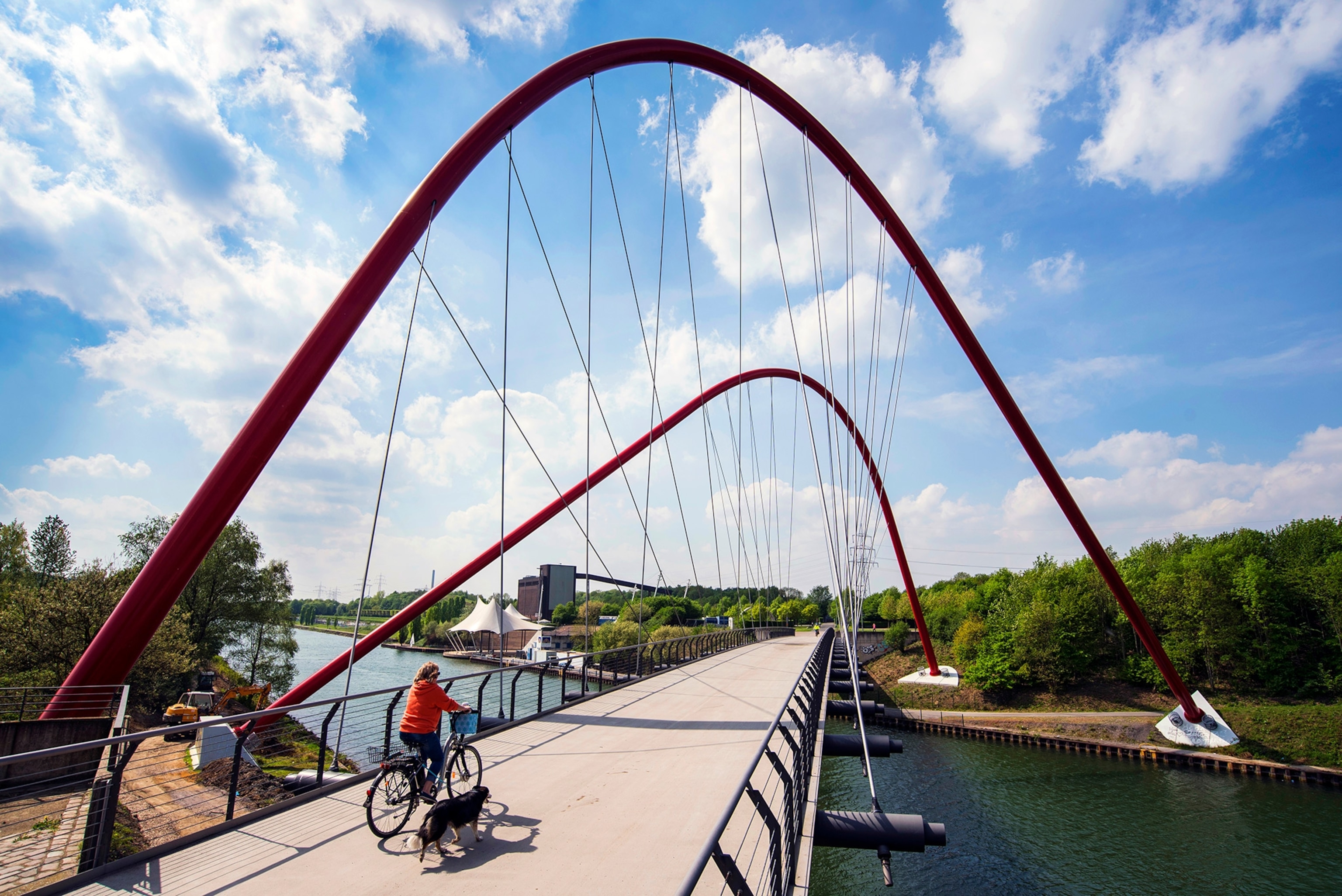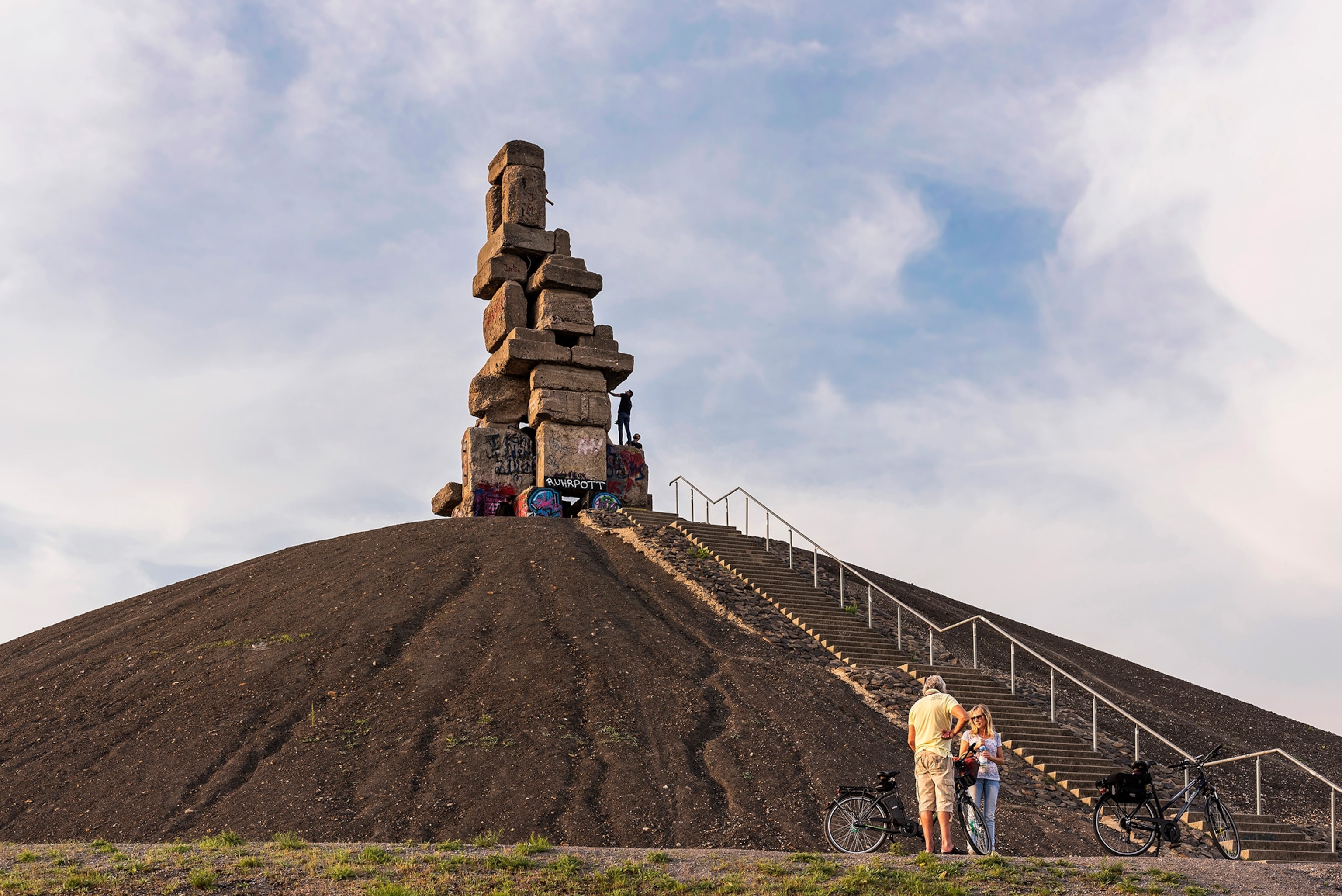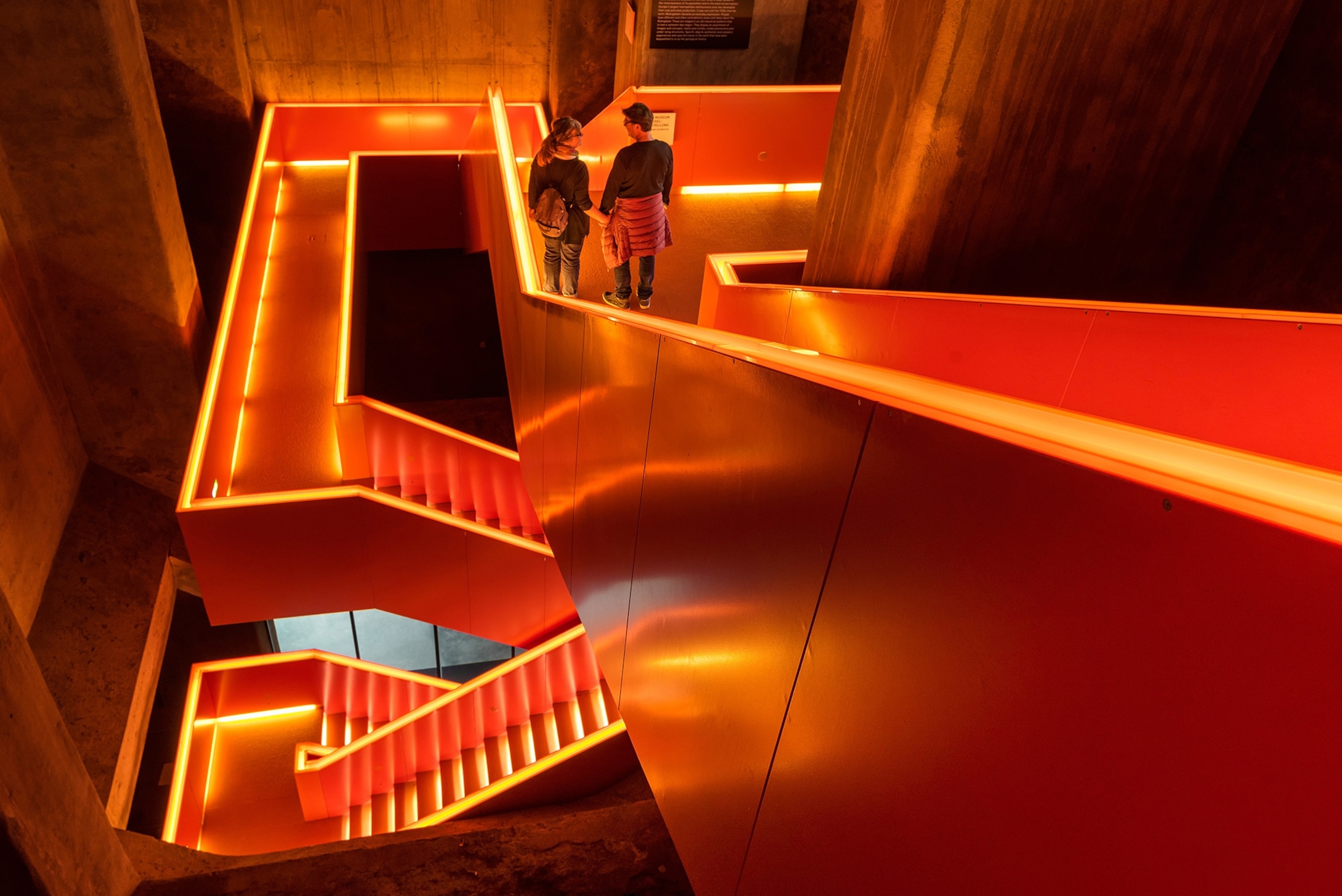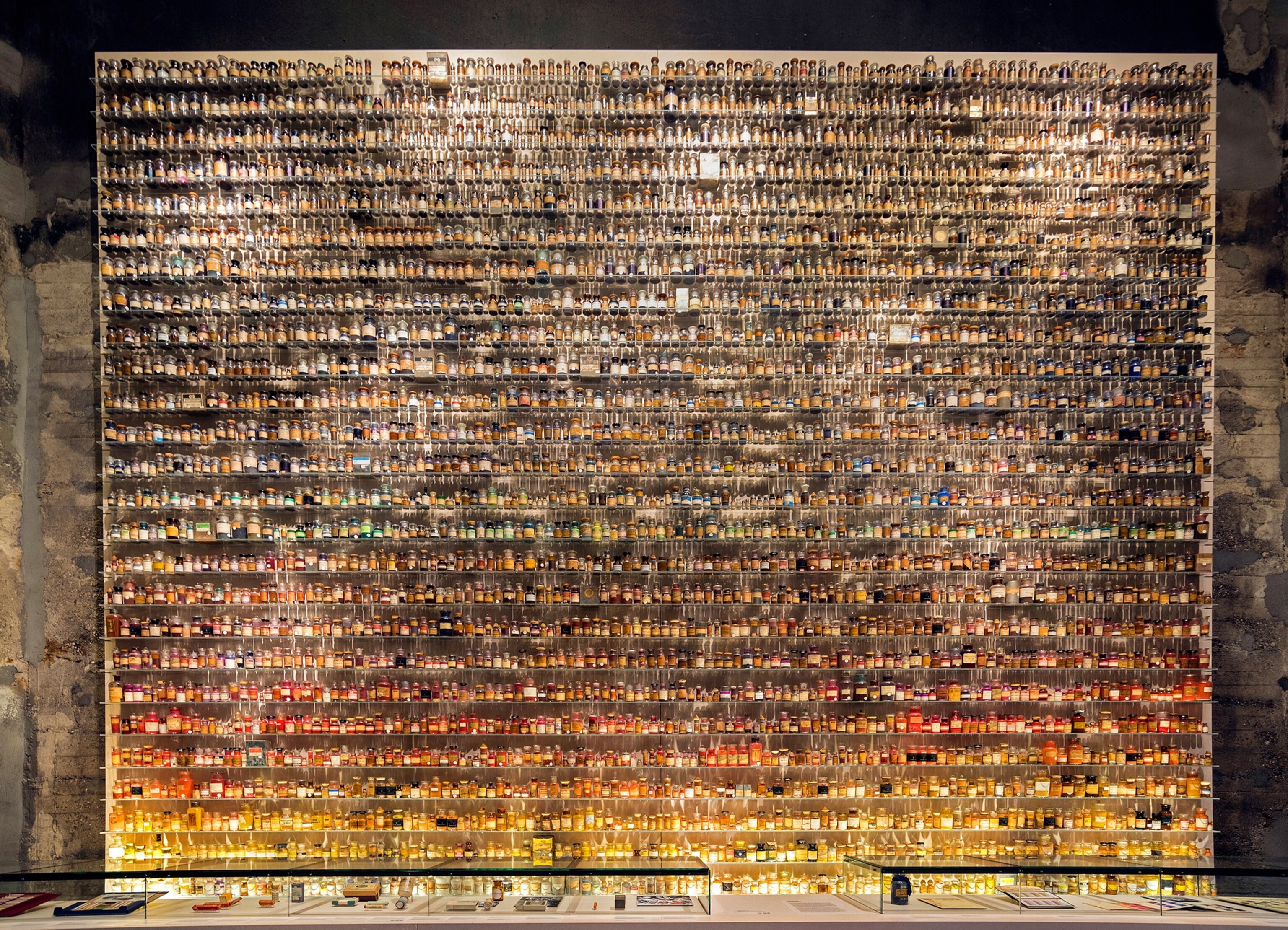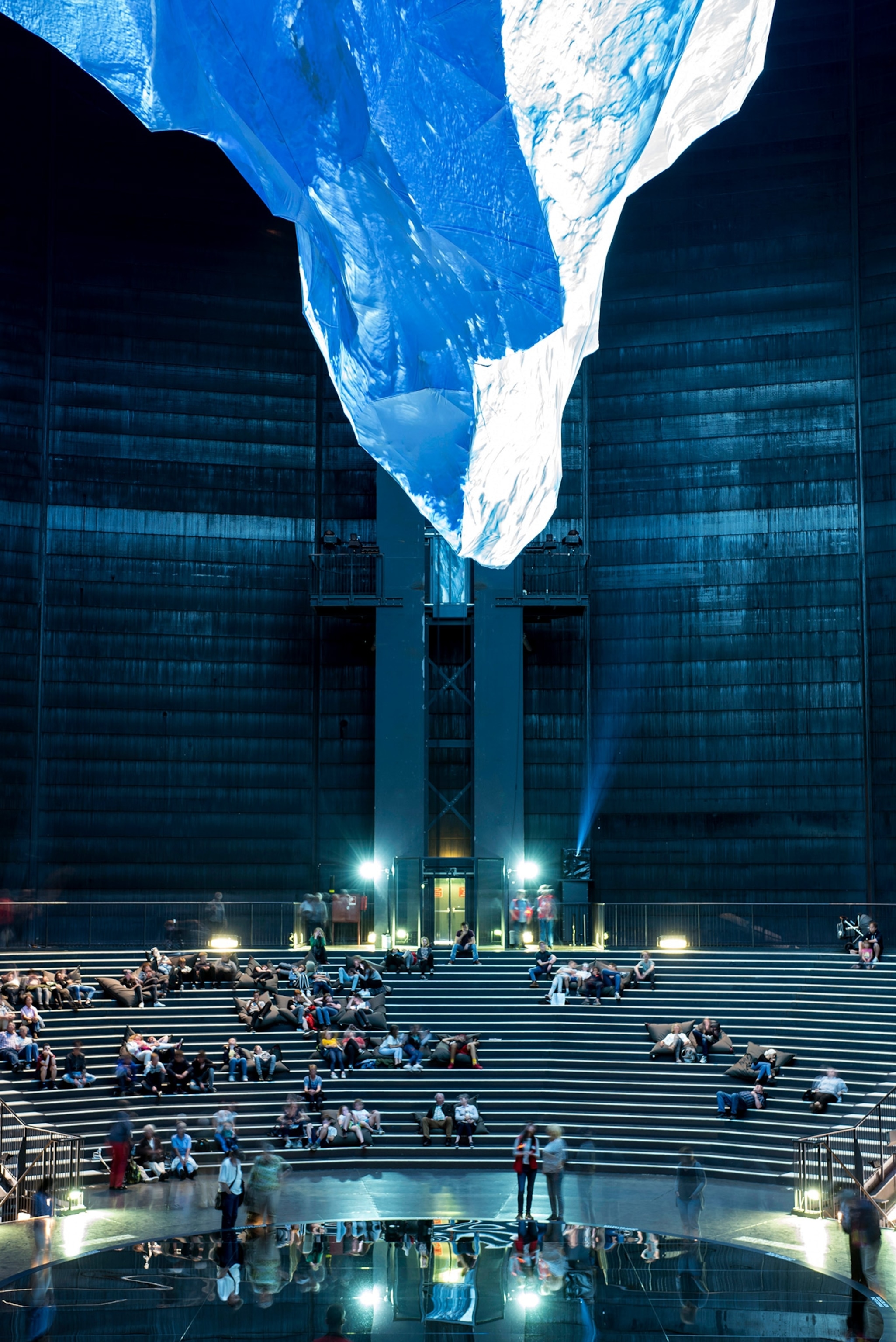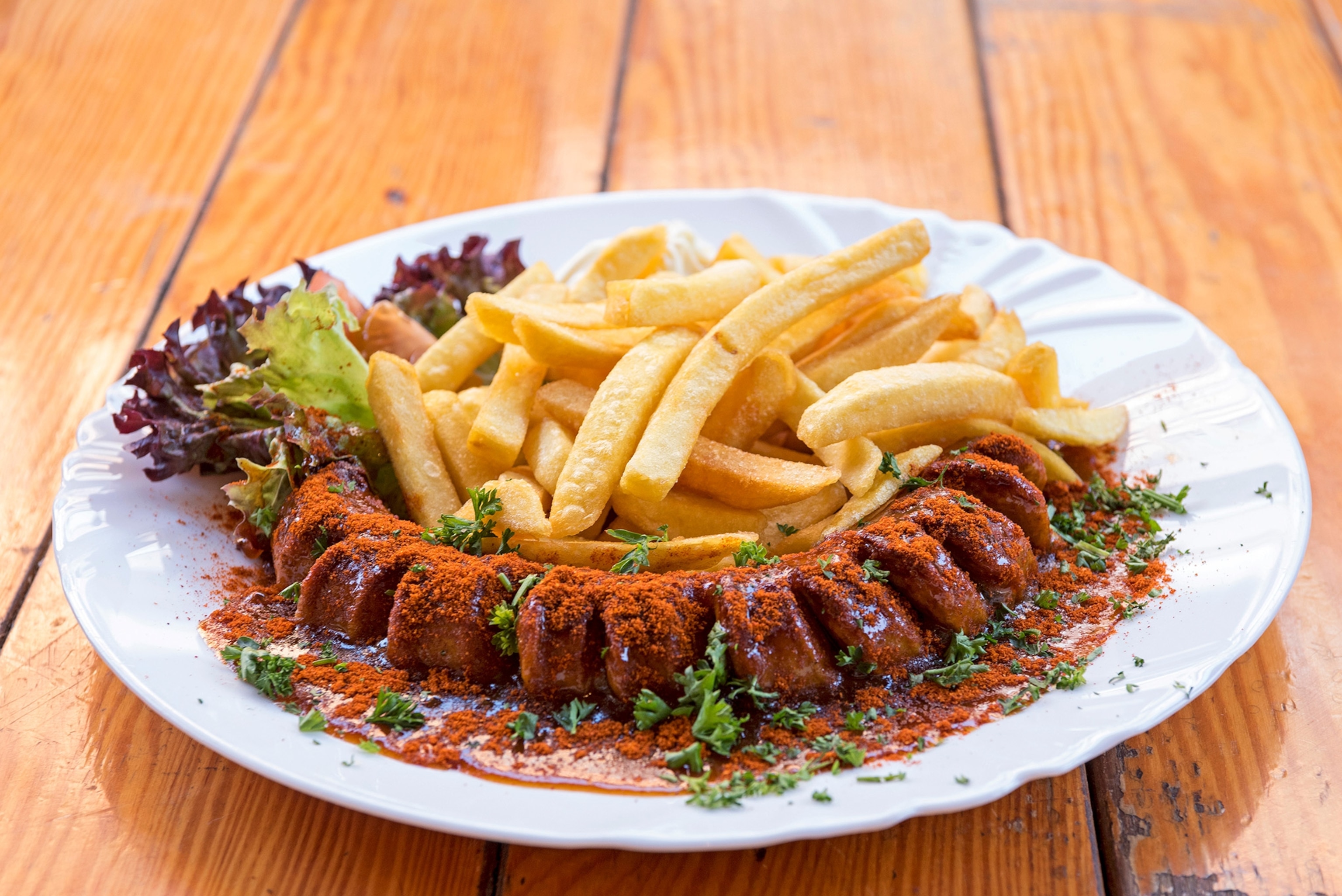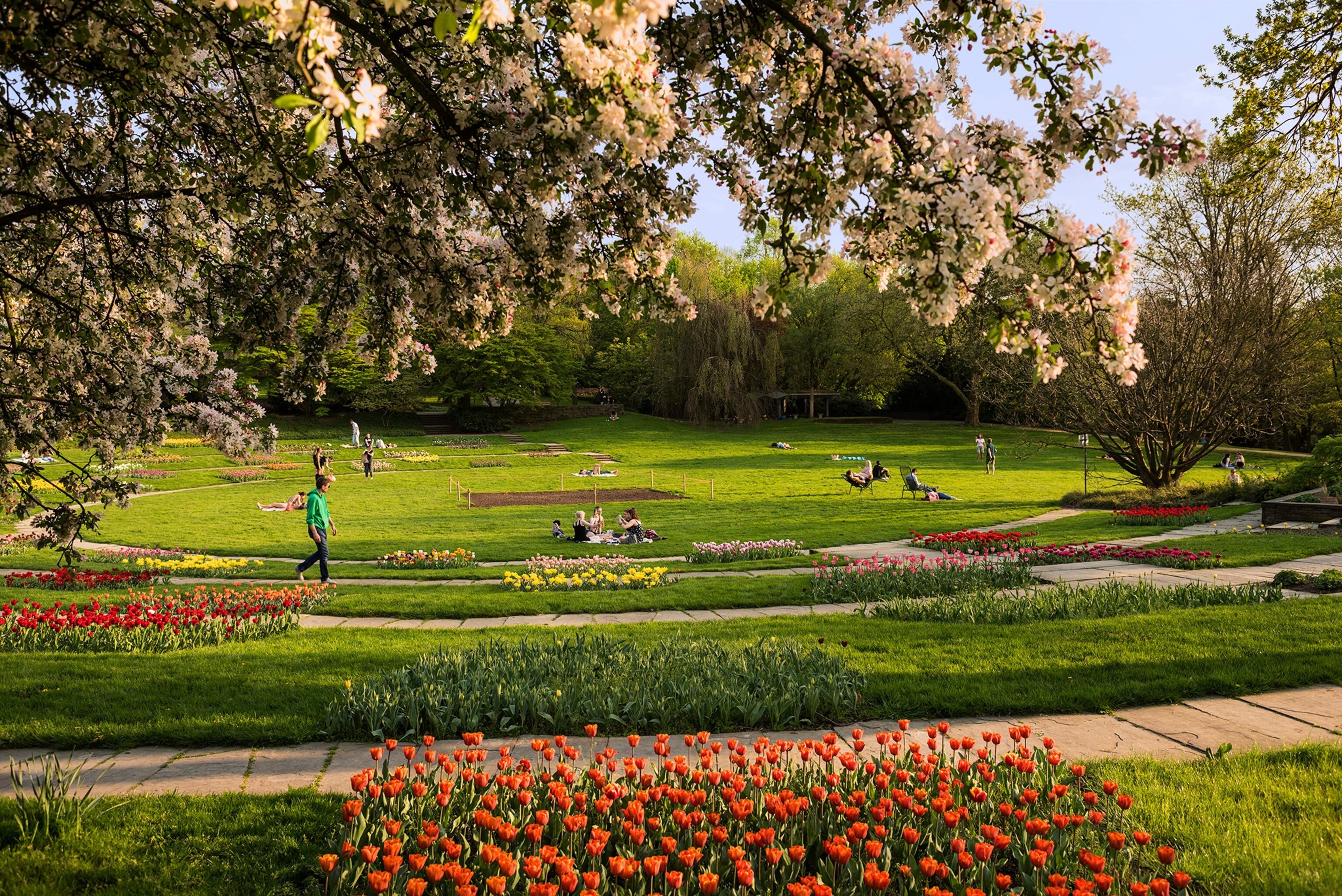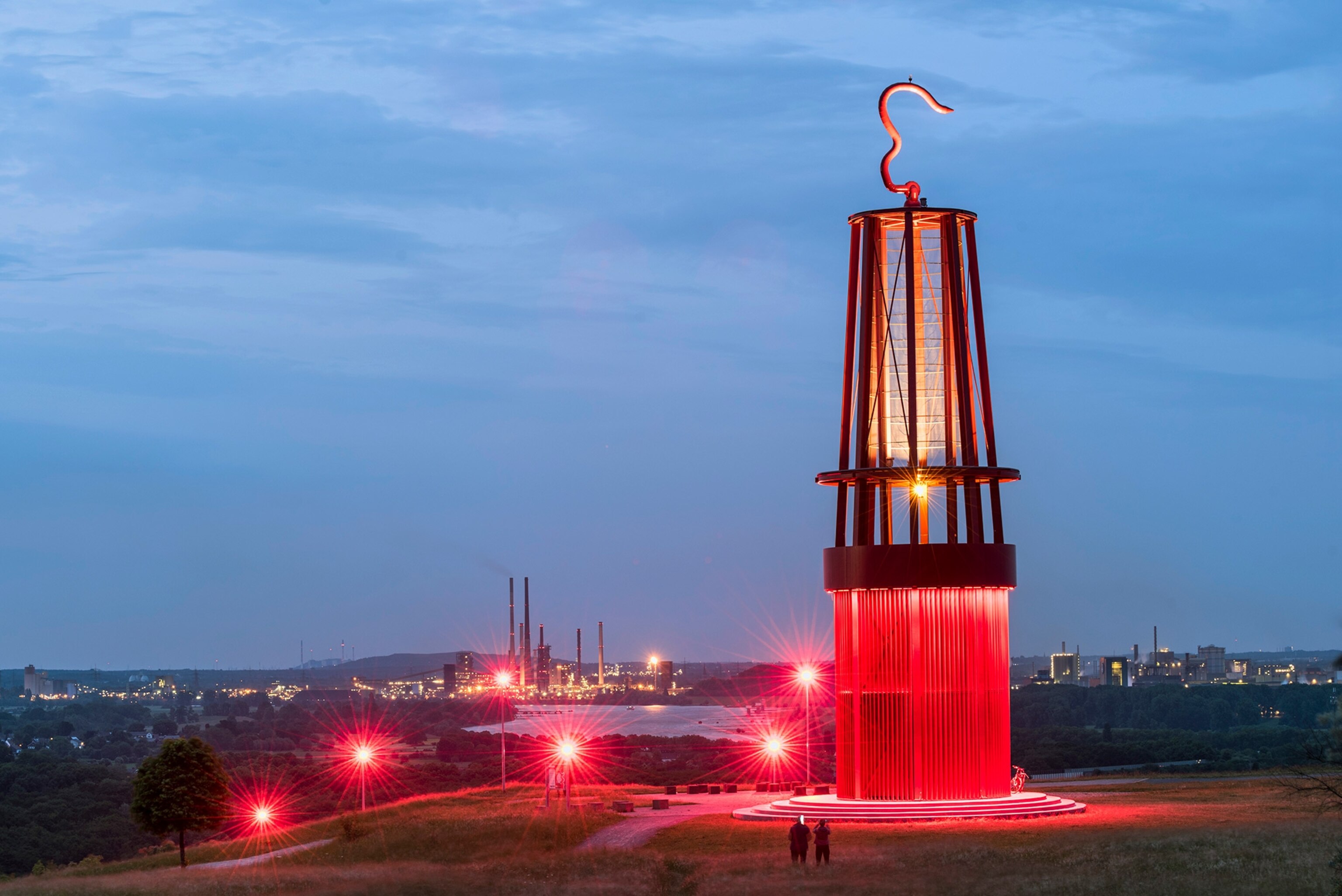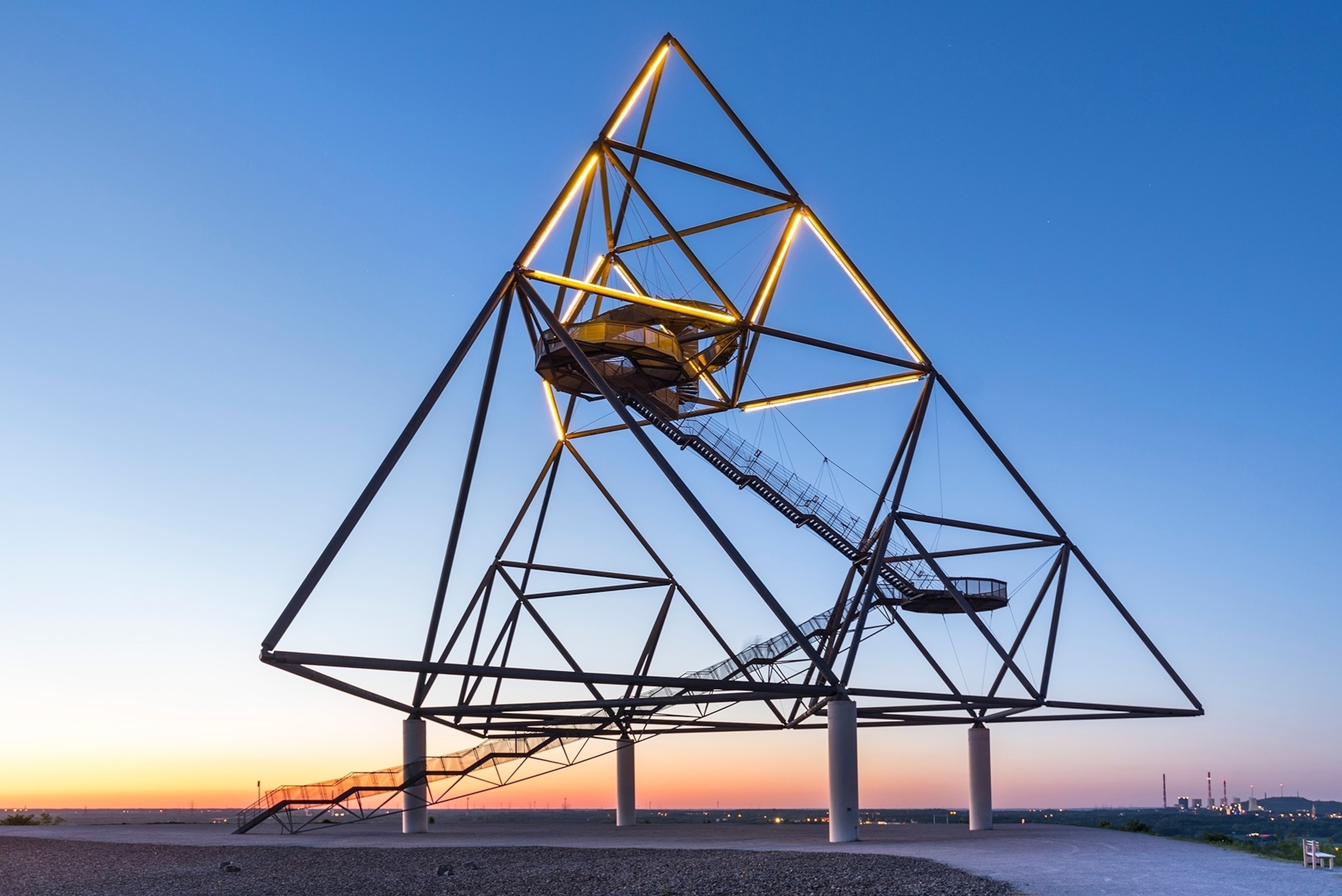
In Germany, industrial sites are now artful enclaves
Former mines go from coal to cool with music festivals, giant steel art installations—and Europe’s biggest artificial lake district.
When the Tetraeder was built in 1994, many residents of Bottrop, a post-industrial city in western Germany, thought it a waste of public money. But now there is no ignoring the 200-foot-tall, walkable steel pyramid rising out of a mine dump, with 400 stairs leading visitors close to the top. In contrast to this curious structure, the surrounding land is a stark gray.
Located about six miles northwest of Essen, Bottrop is in the Ruhr region, whose coal and steel industry fueled Germany’s industrial success between the 1930s and ’80s. Today, coal mining might have screeched to a halt but the region is spinning new stories around its legacy by repurposing sites into cultural attractions.
Changing the narrative
Bottrop can’t match Berlin’s history, Cologne’s magnificent Cathedral or Munich’s bacchanalian revelry during Oktoberfest. Yet it draws more than one million local and international visitors every year—industrial heritage fans who love a good repurposing of Germany’s manufacturing past. This is largely because Ruhr has pride of place on the European Route of Industrial Heritage (ERIH), a network of industrial heritage sites that connects 13 countries and 1,768 places.
When you first glimpse the Tetraeder—or the Tetrahedron—you might not know what to make of the weird and wonderful structure, one that looks like a colossal piece of modern art plucked from a mathematician’s laboratory. The higher you climb the staircase within, the more it creaks and sways. This is not by accident, notes Wolfgang Christ, the Tetraeder’s architect. The feeling of being unsafe is meant to remind visitors what it was like for miners descending deep into the coal mines. By the time you clamber to the top, you feel exactly what he means. The view is worth the climb. The barren moonscape of the mine and the steel and cement structures from the coal plant are in stark contrast to the forest cover beyond.

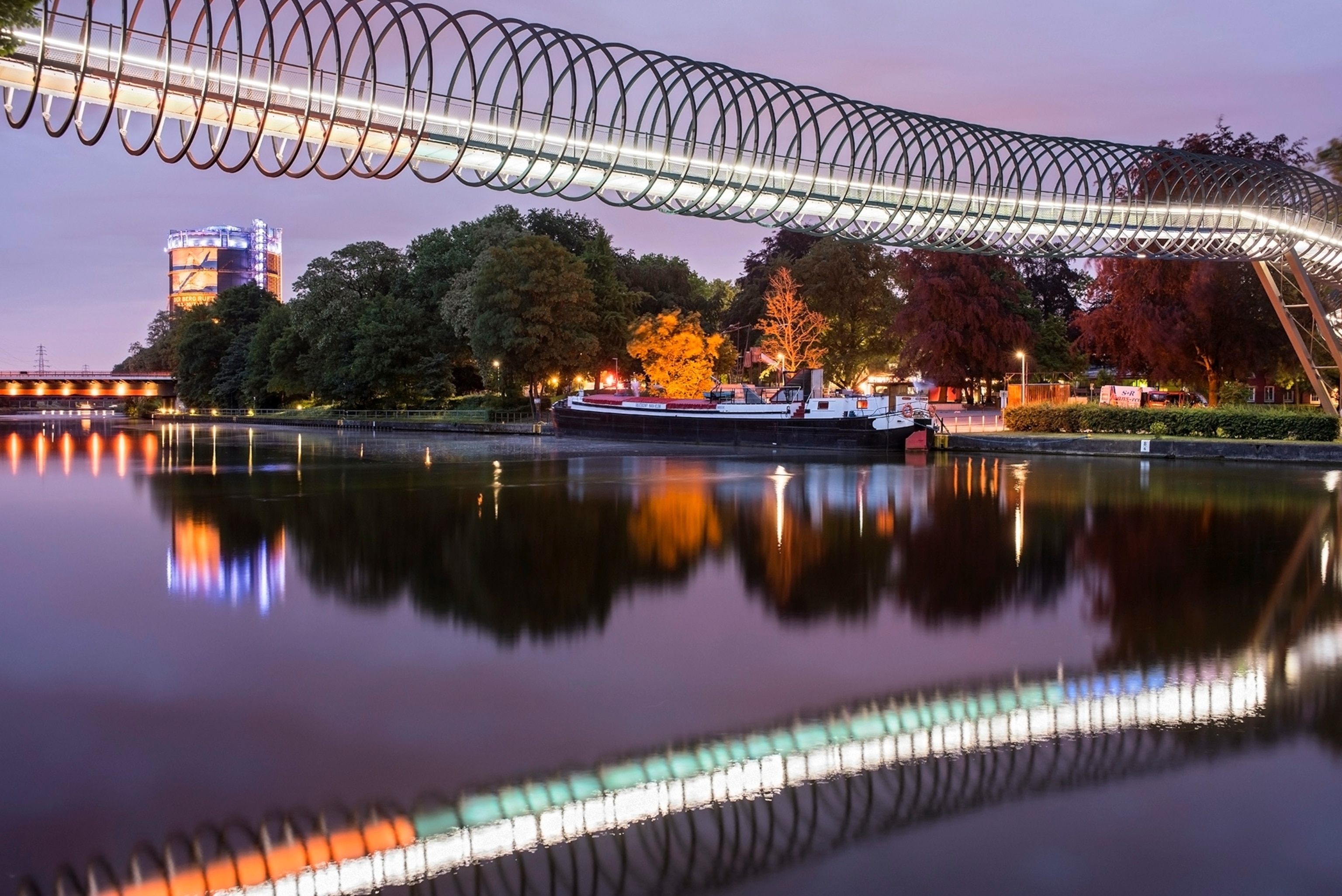
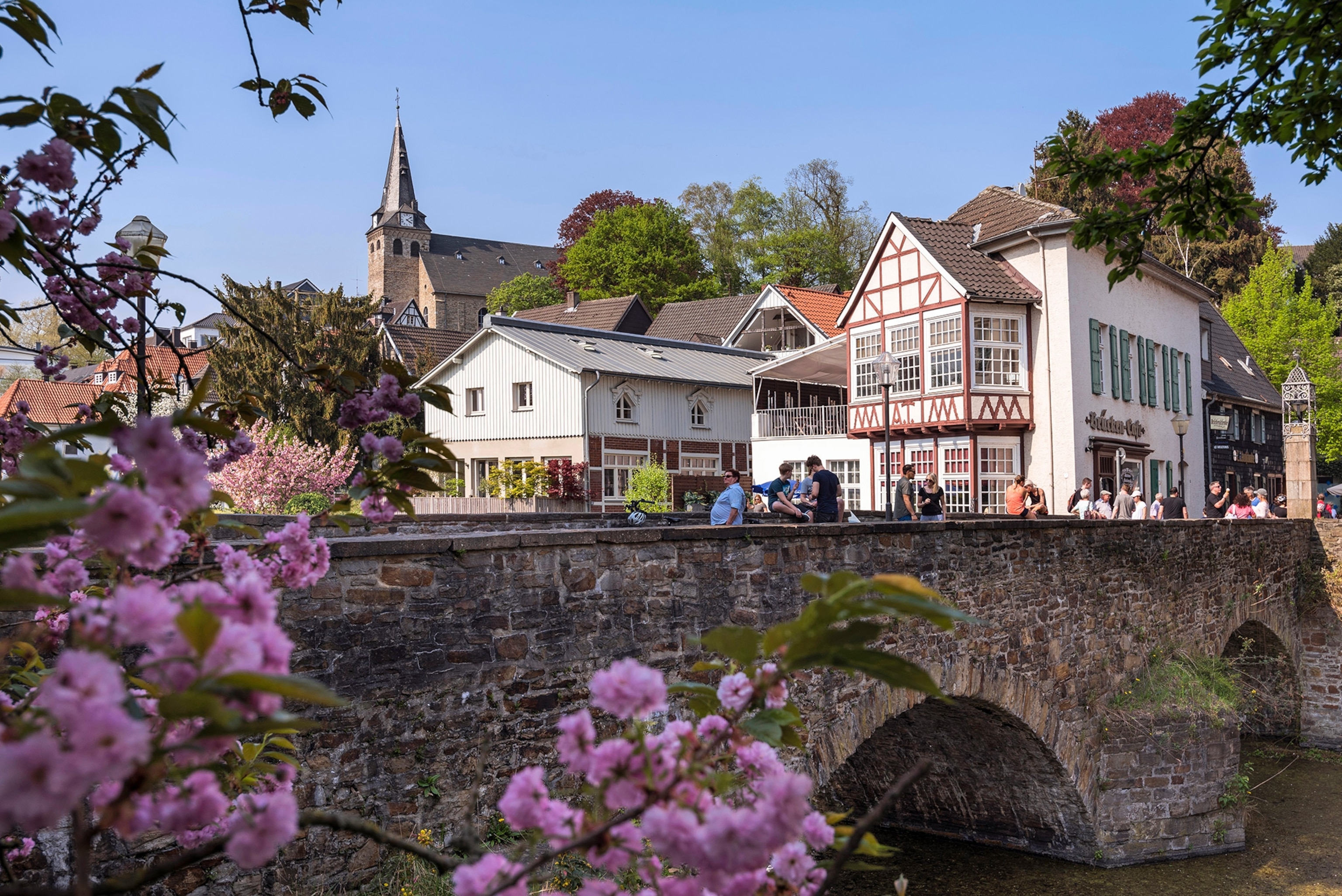
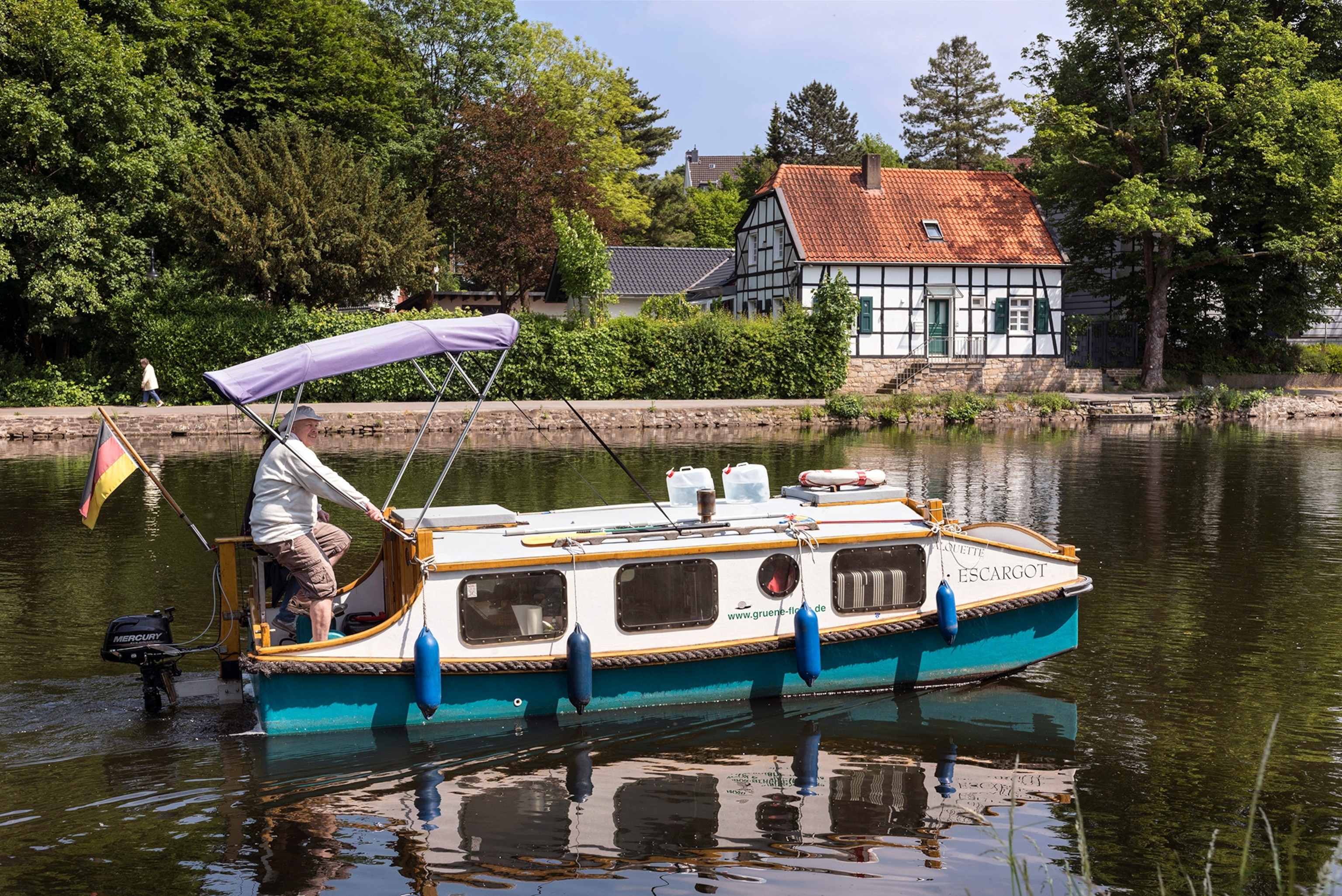
As Bottrop’s golden days came to an end in the 1980s with the loss of jobs, the city felt it needed an icon that reflected on the past and looked ahead at the future. “We decided to build something that represented a kind of an anchor in that economically and culturally stormy time,” says Christ. He designed the Tetraeder as a watchtower for the people, a symbol of solidity and stability.
Mining memories
The mining city of Essen is home to another significant stop on the ERIH—the Zollverein Coal Mine Industrial Complex, a UNESCO World Heritage site. Spread over 247 acres, the Zollverein shut in 1986, and was later fashioned into a hub for art, concerts, festivals, and sports. Inside the disused mine are museums, offices, restaurants, an ice rink, a large public pool, and even a university. But most heartening of all are the vast green spaces.
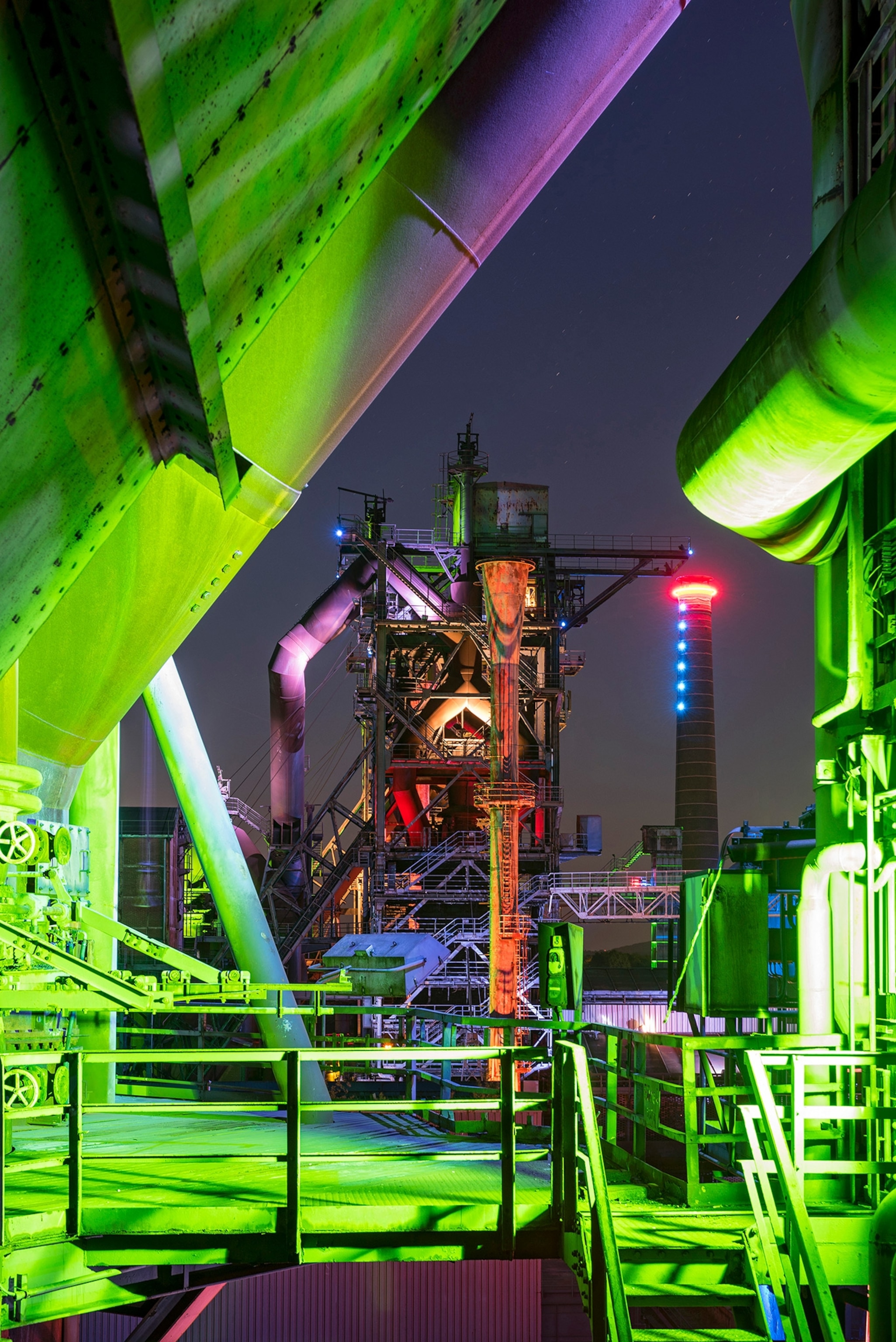
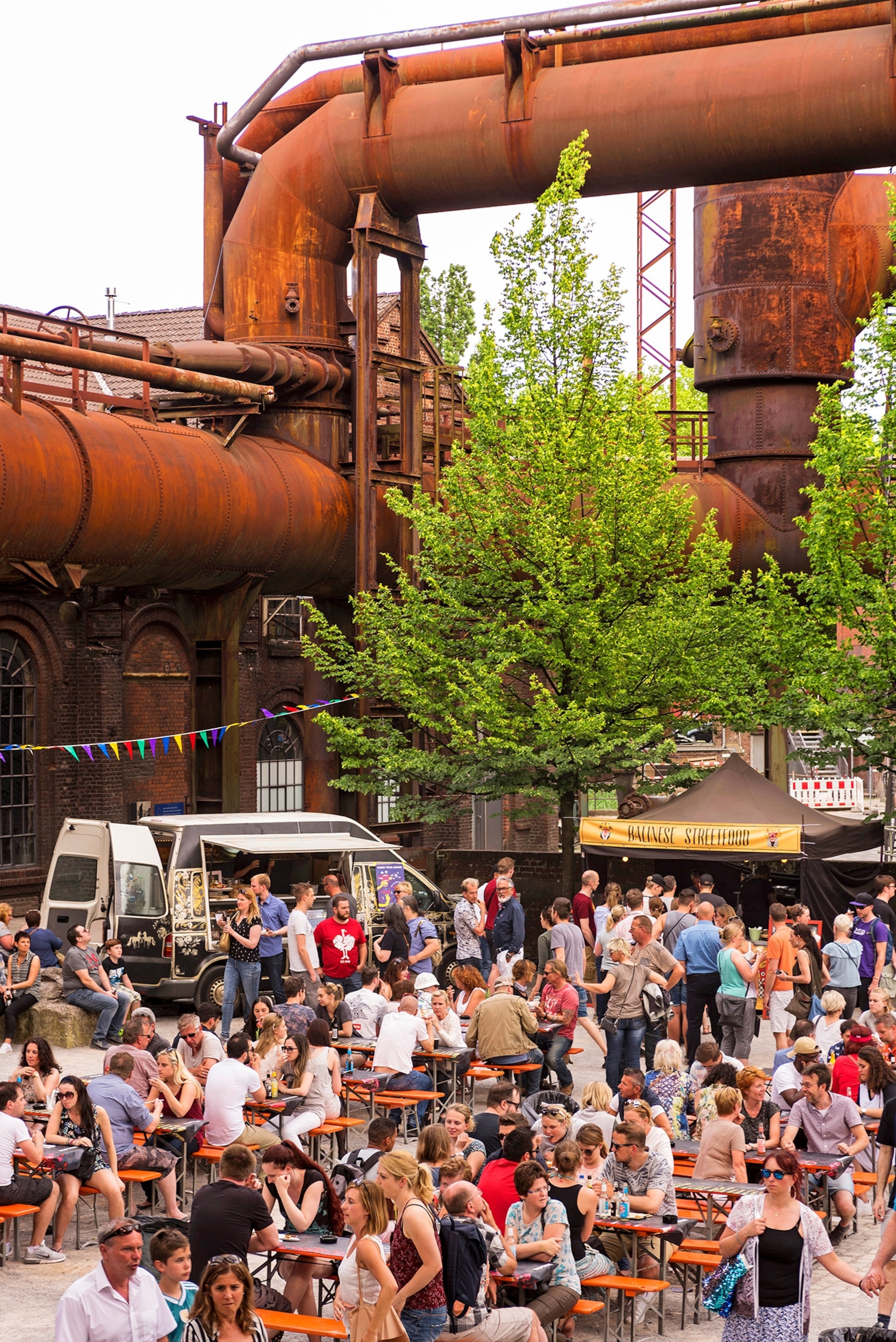
Signs of transformation appear next to steadfast remnants of what the mine used to be. Mammoth machines lie intact, and daily tours conducted by retired miners take visitors into the heart of 20th-century structures. Some people visit Zollverein to experience what they’ve never seen before, and some to remember—pits, coking plants, railway lines, and miner’s homes from a different era seem untouched. “Former miners get to show their children and grandchildren how hard work was. We often hear people talk family history when they visit us,” says Hanna Lohmann, press and public relations officer for Zollverein. “It was coal that brought the region together.”
City of iron
A significant part of the European Route of Industrial Heritage, the Ferropolis is located in the town of Gräfenhainichen, in the Saxony-Anhalt region. The open-air museum features five gigantic excavators that appear to be right out of a sci-fi movie. Ferropolis was an open pit lignite mine in the former German Democratic Republic (East Germany), whose machines were spared the scrapping yard once the mine closed in the 1990s. Its star attraction is the Racehorse, a 500-by-100-foot excavator. Ferropolis hosts some of Germany’s most popular music festivals, such as the electronic extravaganza Melt. Stages for indie and hip-hop music are set up next to machines that loom like monsters.

Lakeside retreat
The most extreme makeover, however, can be seen in eastern Germany’s Lusatia region, where lignite mines have been turned into Europe’s biggest artificial lake district. Lusatia was once known for its barren landscape, with large craters left from mining. In the 1970s, the craters were flooded and turned into lakes. Today, 26 lakes thrive here along with forests and cycling paths. Visitors find buzzing cafés, campsites, and beaches, as well as opportunities for horse riding and quad biking in the region.
- National Geographic Expeditions

